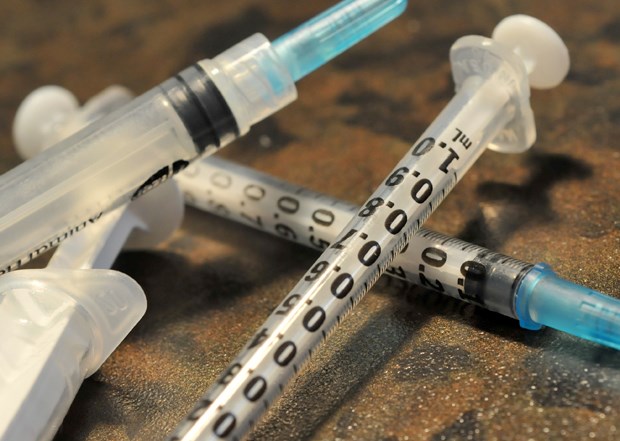A total of 27 people in the North Shore/Coast Garibaldi health region died of overdoses from illicit drugs in 2016, most of those likely linked to fentanyl.
That’s almost double the number of deaths in the health region in both of the two previous years, which stood at 15 for both 2014 and 2015.
Of the deaths in 2016, 15 were in North and West Vancouver.
“Basically we’ve seen a doubling of overdoses on the North Shore,” said Dr. Mark Lysyshyn, medical health officer for the region. “What’s happening on the North Shore is consistent with what’s happening across the province.”
Lysyshyn made the comments after the B.C. Coroner’s Service released year-end statistics on overdose deaths for 2016 on Wednesday showing the total for the year soared to 914 provincewide by the end of
December, almost an 80 per cent increase over deaths in 2015.
Officials couldn’t confirm how many of those deaths were linked to fentanyl, as toxicology reports for the last two months won’t be completed until March, but the majority are expected to involve the drug.
The number of overdose deaths spiked in November and December, said Lysyshyn. “In most of 2016, we were in a bad situation with fentanyl,” he said. “We saw things get demonstrably worse in November and December.”
Health authorities suspect that’s because the powerful drug carfentanyl – chemically similar to fentanyl but stronger and more toxic – had made its way into the illicit drug supply.
“It’s about 100 times more potent than fentanyl which is 100 times more potent than heroin,” he said.
Most of those who died of drug overdoses were between 19 and 49. Compared to other areas of the province, the number of overdose deaths on the North Shore remains low, said Lysyshyn. “We have a lot of resilience on the North Shore.” Generally people are not using opioid drugs here to the same extent they are in other places like Vancouver, Surrey and Victoria – where overdose death rates are much higher, he said.
Lysyshyn said most people who overdose on fentanyl have been taking heroin or other opioids. The drug has also been found linked to cocaine and methamphetamine, but that is less common, he said.
So far, the coroner’s office has not identified any cases where fentanyl was linked to marijuana, said Lysyshyn. “Obviously that would put a whole population at risk. That population would be very vulnerable,” he said.
Lysyshyn said within the Coast Garibaldi health region, the community of Powell River remains a focus of concern for health officials. Six people died of drug overdoses in the small town in 2016 – two of those in treatment centres.
While doctors initially worried about Whistler, fentanyl has not shown up there in a significant way, said Lysyshyn. There were fewer than five drug overdose deaths throughout the whole Sea-to-Sky corridor in 2016, he said.
“People are using different drugs there,” said Lysyshyn. “People don’t go up to Whistler to use heroin.”
In response to the fentanyl crisis, police officers and firefighters are now equipped with naloxone kits. Naloxone is an antidote that can reverse the effects of an opioid overdose. Hospital emergency rooms and community heath centres now have the kits and refills for handout to users of illicit drugs as well as family and friends of people at high risk of an overdose.
In response to the latest numbers, the province said this week it is putting more than $16 million into addiction treatment services, including both residential rehab beds and outpatient programs. That is expected to provide about 240 people with treatment in 60 new residential beds – including 20 for youth and 40 for adults. Another 200 people will get access to 50 intensive outpatient treatment spots, according to the province. Those beds and program spaces are expected to start opening in the spring.



